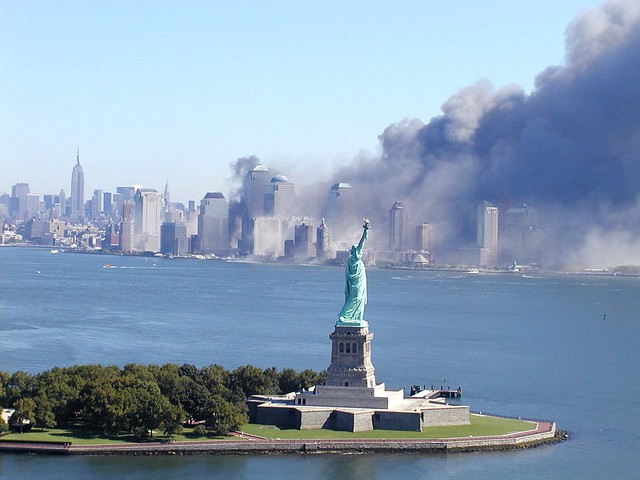


Pagers, Pay Phones, and Dialup: How We Communicated on 9/11
By Garrett Graff, writing for Wired
The voice message that Lauren Grandcolas left for her husband, Jack, on September 11, 2001, would puzzle a generation raised with smartphones.
Two months pregnant with their first child, the 38-year-old Grandcolas was returning home to California when her flight from Newark Airport—United 93—was hijacked, and she, along with other passengers and crew, used the Verizon Airfones that then populated the backs of plane seats to call down to loved ones below.
“Honey, are you there? Jack, pick up, sweetie,” she began. She’d reached the answering machine, the kind once common in American homes that played a message out loud in the house while the recorder ran—allowing people still sprinting for the landline an extra chance to pick up or, in an era before Caller ID, for those screening calls to hear who was calling before deciding whether to answer.
Jack didn’t pick up, so she continued: “OK, well, I just wanted to tell you I love you. We’re having a little problem on the plane. I’m totally fine. I just love you more than anything. Just know that. Please tell my family I love them too.”
Then 27-year-old Honor Elizabeth Wainio called her stepmother. Wainio’s stepmother later recalled that the final words she heard from the plane were: “They’re getting ready to break into the cockpit. I have to go. I love you. Goodbye.” Minutes later, the hijackers crashed Flight 93 into an abandoned mine in Shanksville, Pennsylvania, as the passengers and crew overpowered the four men who had seized their plane.
The voice messages are artifacts that underscore the bravery and sacrifice of that day exactly 18 years ago, but also offer a unique glimpse into how different an era 2001 truly was. I’ve spent the past three years listening to, reading, and collecting thousands of Americans’ experiences on 9/11, as part of research for a new book, The Only Plane in the Sky, an oral history that ultimately traces how 480 Americans experienced that tragic day, from the Twin Towers, the Pentagon, and Shanksville to the West Coast, air traffic control towers, Capitol Hill, and aboard Air Force One with President George W. Bush.
Throughout my research, I kept running across telling details, like the anachronistic first words of Lauren Grandcolas’ final voice message, that made me stop and think about how comparatively primitive communications were when those September 11 attacks unfolded. How people turned to their BlackBerrys for information, posted their reactions to the attacks on LiveJournal, and shared concern with friends over AOL Instant Messenger.
For the rest, click here.
Photo credit: <a href=”https://visualhunt.co/a3/40fa3ac7″>9/11 photos</a> on <a href=”https://visualhunt.com/re5/190b599c”>Visual Hunt</a> / <a href=”http://creativecommons.org/licenses/by/2.0/”> CC BY</a>